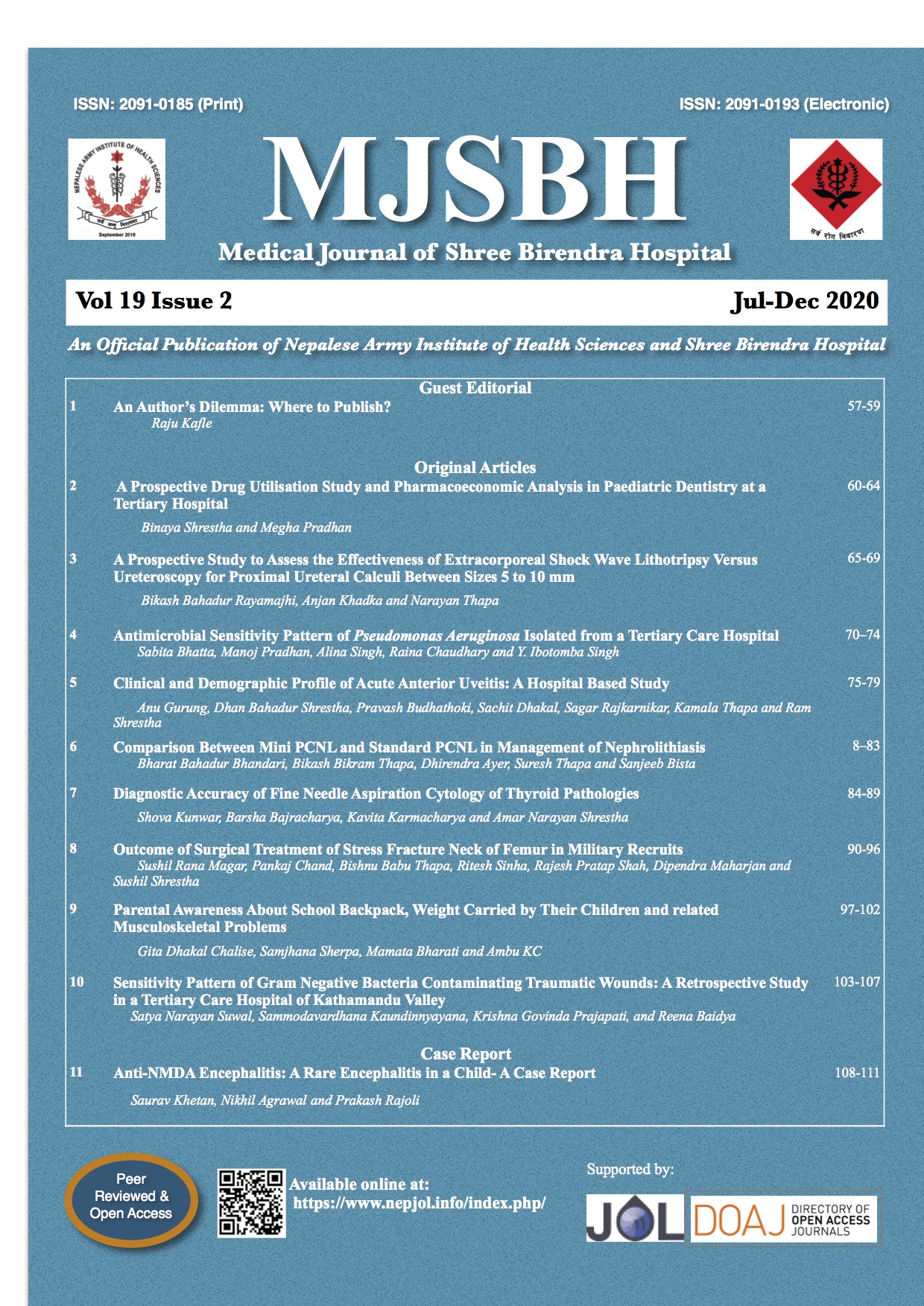Sensitivity Pattern of Gram Negative Bacteria Contaminating Traumatic Wounds: A Retrospective Study in a Tertiary Care Hospital of Kathamandu Valley
DOI:
https://doi.org/10.3126/mjsbh.v19i2.27689Keywords:
colistin, culture and sensitivity, gram negative bacteria, multi-drug resistanceAbstract
Introduction: Gram negative bacteria are commonly involved in wound infections and are significantly associated with morbidity and mortality because of increasing resistance to commonly used antibacterial agents. This study aims to evaluate the pattern of antibacterial sensitivity of the gram negative bacteria from wound swabs of accidental trauma cases.
Methods: This retrospective study was done by collecting all the culture positive reports for wound swabs of accidental wounds from the microbiology laboratory and analyzing the reports showing growth of gram negative bacteria for frequency of sensitivity to commonly used antibacterial agents.
Results: Culture positivity rate was 21.95% with growth of gram negative bacteria in 79.7% of cases. The most commonly isolated organism was Escherichia coli being 41.3% among gram negative isolates. Highly resistant bacteria were E. coli, Klebsiella pneumoniae and Acinetobacter spp.
Conclusions: As there is low culture positivity rate for wound swabs obtained before washing the wounds inflicted by accidental trauma, prolonged routine use of prophylactic antibiotic is not justified. Thoroughly washing the wound is very likely to decrease the rate of wound infection further and reduces the need of antibacterial agents. Culture and sensitivity test should guide the treatment when wound is infected because highly resistant gram negative organism may be involved in such cases.
Downloads
Downloads
Published
How to Cite
Issue
Section
License
This license enables reusers to distribute, remix, adapt, and build upon the material in any medium or format for noncommercial purposes only, and only so long as attribution is given to the creator.




